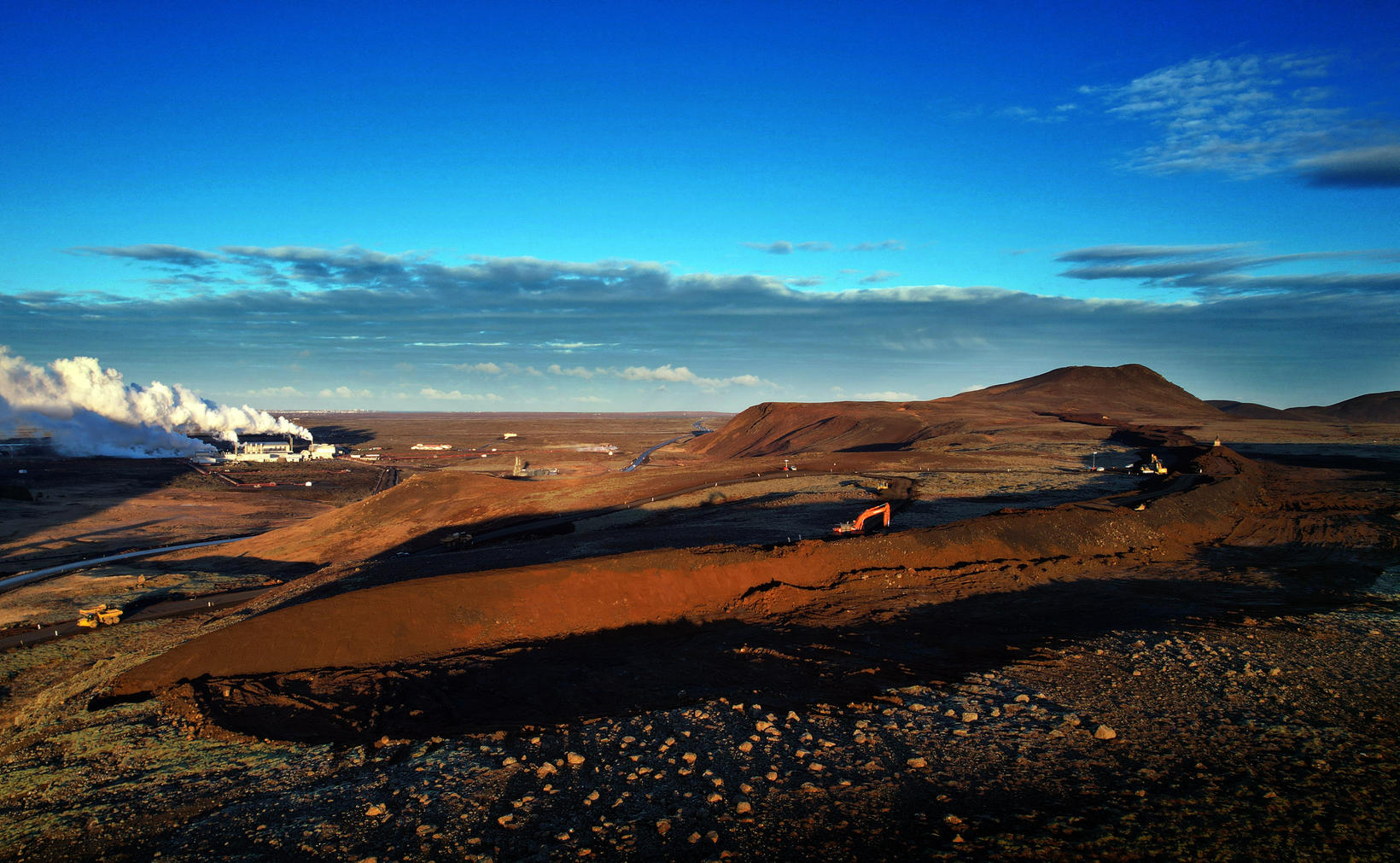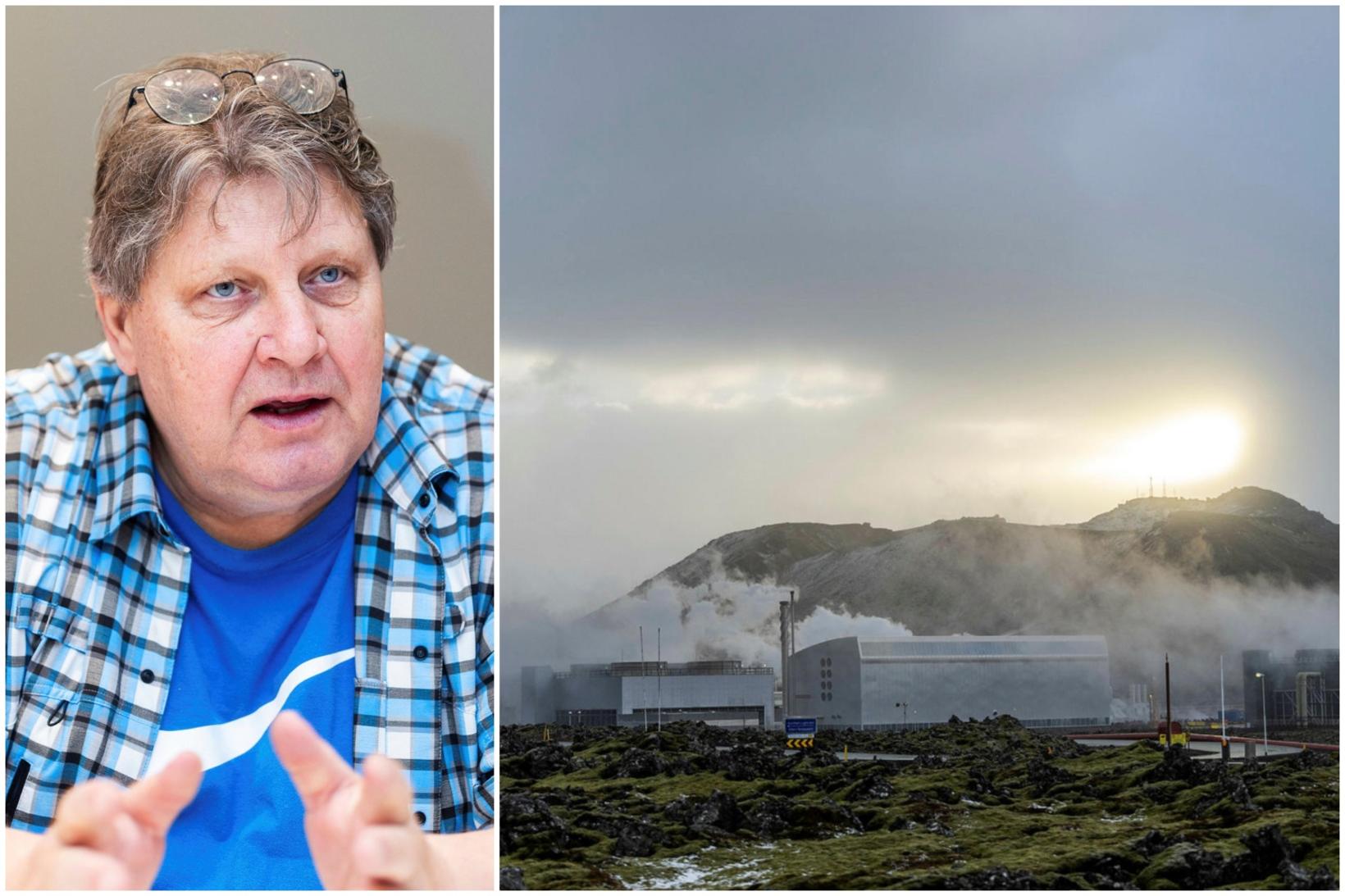The dike might have expanded
Land continues to rise at Svartsengi and it has been rising approximately 1 cm each day in the last few days. mbl.is/Eggert Jóhannesson
The devastating earthquakes that occurred on Friday, November 10, may also have expanded the magma's dike from a deeper chamber to a shallower one. As a result, more magma flows higher into the earth's crust now than before.
This is what Þorvaldur Þórðarson, professor of volcanology at the University of Iceland, says. He says that geoscientists did not expect this change.
Land continues to rise at the power plant in Svartsengi, and much faster than it did before November 10. Þórðarson says that it can be estimated that there is enough magma in the lower chamber.
The crust weaker on the east side
“Part of he magma is clearly ready to come up. The conditions are that if the magma sees an opportunity, it will start. And there is enough magma, which means that there is a chamber that can maintain this function for a really long time, maybe a few more years or decades.”
He says it is difficult to tell whether he expects another magma run east of the land rise, as it happened on November 10, or whether he thinks it is more likely that the magma will be moving west if it starts again.
“The eastern side has been eroded quite a bit and the crust is weaker there. It would therefore be easier for the magma to move in that direction. It can also move west and if it does so, it will go to Eldvörp, but it is more likely that the Sundhnúka crater row will go off.”
The areas could well be connected
According to the established definition of the volcanic systems of the peninsula, it could be assumed that the activity had shifted from one system to another, namely from Fagradalsfjall to the Svartsengi-system. Þórðarson says that developments in the situation may have undermined such a definition.
“I think there’s a lot of evidence that these areas are connected. These events we’re seeing, in Svartsengi and Fagradalsfjall, are due to magma that has accumulated in this deeper storage chamber, and then it tries to find its way up,” he says.
“It’s this deeper storage chamber that controls the event.”
Þorvaldur Þórðarson, professor of volcanology thinks that the land rise near Svartsengi might be slowing down which would mean that perhaps there won't be an eruption this time. Composite image
Starting to think that an eruption might not occur
Þórðarson says he now believes it is less likely than before that the seismic activity on the Reykjanes peninsula will result in a volcanic eruption at this time.
“I’m becoming more and more inclined to believe that this will not end in an eruption,” he says.
“But I’ve said a lot in this process,” he admits, but points out more to support this view.
“The land rise is decreasing. It was rising quite fast about a week ago, but in some places the land rise has stopped. The land rise at Svartsengi has slowed down, and so one hopes that it will stop for now.”







/frimg/1/53/30/1533092.jpg)

